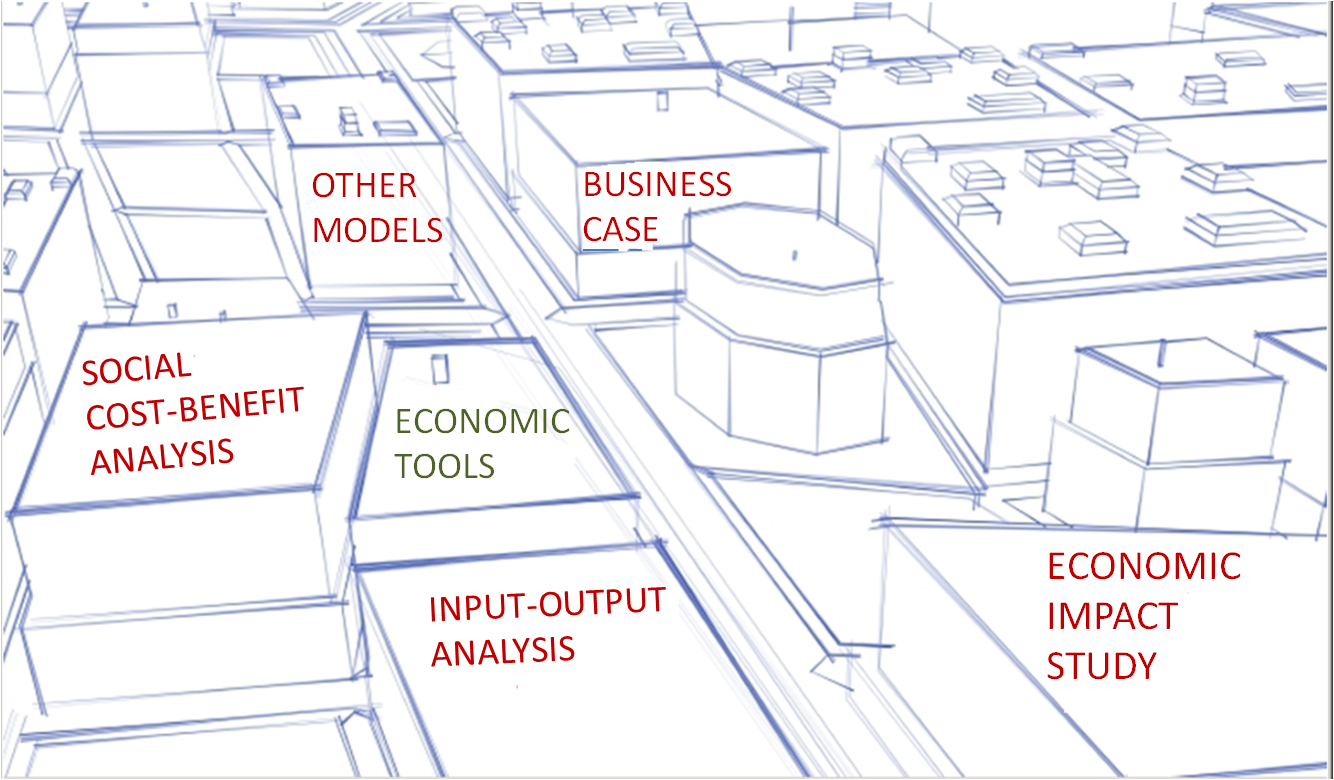Difference between revisions of "Economic tools"
| Line 13: | Line 13: | ||
Image:Economic_tools_v7.png| 700 px |
Image:Economic_tools_v7.png| 700 px |
||
rect 60 321 319 487 [[ |
rect 60 321 319 487 [[Social cost-benefit analysis|Social cost-benefit analysis]] |
||
rect 360 550 716 763 [[ |
rect 360 550 716 763 [[Input-output analysis|Input-output analysis]] |
||
rect 382 349 600 500 [[ |
rect 382 349 600 500 [[Economic tools|Economic tools]] |
||
rect 289 148 456 277 [[ |
rect 289 148 456 277 [[Other economic tools|Other economic tools]] |
||
rect 574 162 790 271 [[ |
rect 574 162 790 271 [[Business case|Business case]] |
||
rect 978 521 1301 759 [[ |
rect 978 521 1301 759 [[Economic Impact Study|Economic impact study]] |
||
desc bottom-left |
desc bottom-left |
||
Revision as of 15:30, 13 November 2012
Economic tools
Economic tools (or tools of economic analysis) facilitate the preparation of a robust urban plan that encourages economic development in a way that is conducive to and compatible with sustainability objectives. Put differently, they influence the way planned urban objects and urban environments are going to be shaped. Furthermore, economic tools are applied to measure the economic impact of existing urban objects. In essence, they are urban planning tools (though not solely used by urban planners).
Users of economic tools
Economic tools can be used by economists (specialists) but also by specialized is an attribute of::urban planners in socio-economic appraisal.
Types of economic tools
Urban planning processes employ a host of economic tools/models (see clickable map):
MAP
<websiteFrame> website=http://securipedia.eu/cool/index.php?wiki=securipedia.eu&concept=Economic_tools height=1023 width=100% border=0 scroll=auto align=middle </websiteFrame>
<headertabs/>

